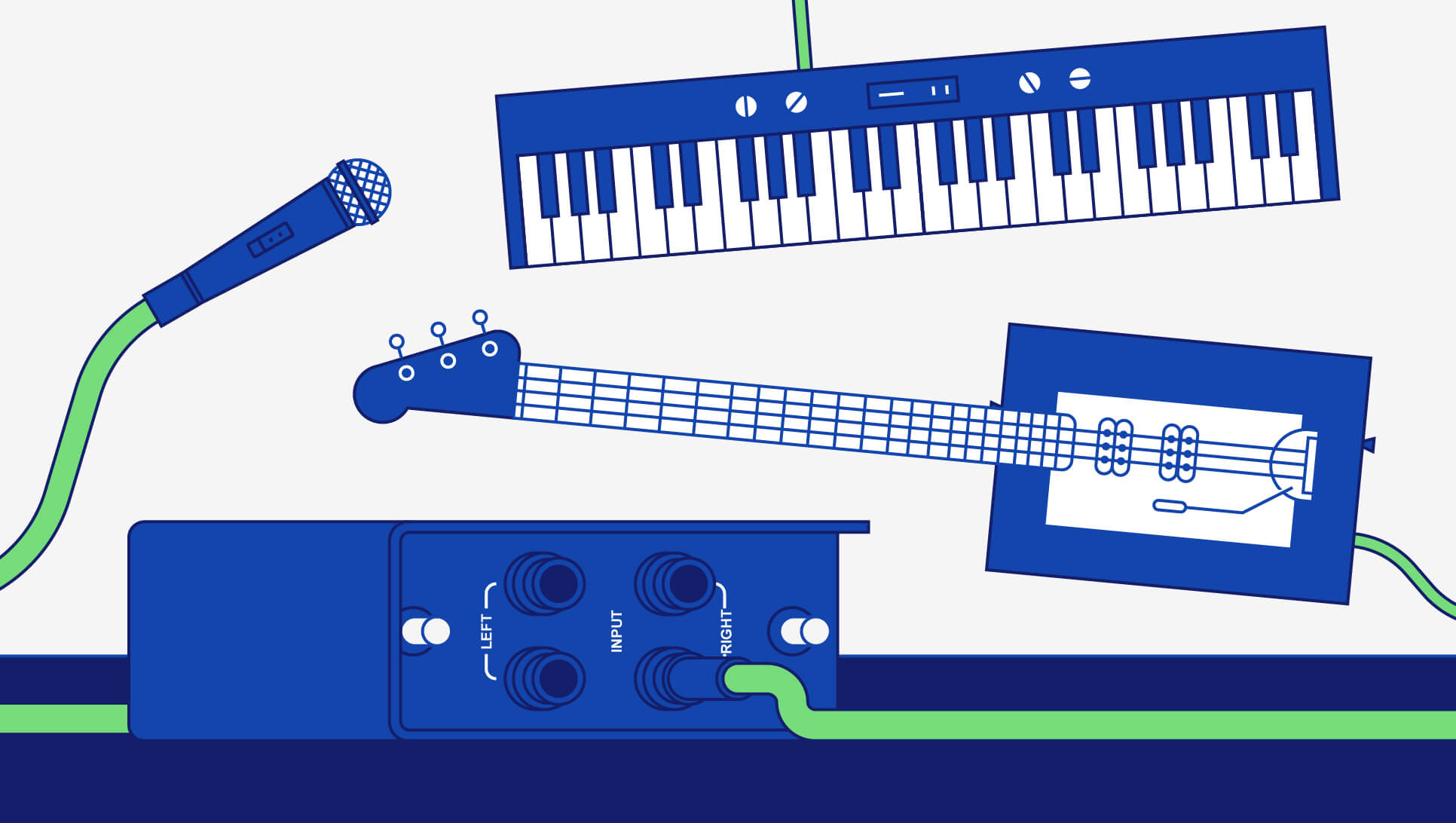Understanding the types of audio and digital cables
The music business is the business of cables. Asa result, there is a variety of different types of audio cable. By understanding what purpose each serves, you’ll know when to use each audio cable and why.
Whether in a music studio or a live sound scenario, signal flow is the Achilles heel of sound. You could have a huge stack of PA speakers and amplifiers ready to deliver thousands of watts of power to your audience. But if you don’t have an understanding of signal flow and what types of audio cables do what, you’ll disappoint your audience.
But different types of audio cables serve another purpose too, not just delivering quantities of signal to an output. The quality of the signal is also important too!
The difference between balanced and unbalanced audio cables
As musicians and music producers, we use two different types of cables. We call these “balanced” and “unbalanced” cables. Whether a cable is balanced or unbalanced depends entirely on how many signal wires are inside the cable which affects the fidelity of the audio signal you’re transmitting.
What are unbalanced audio cables?
Unbalanced cables such as TS or RCA cables feature two wires (a signal wire and a ground wire) inside the cable. And these wires connect to individual conductors in the connectors at both ends of the cable. Furthermore, both wires end at the connectors and have their own contact points.
An example of an unbalanced TS (tip-sleeve) cable is guitar cables. You’ll find these unbalanced cables on stage and in studios as we use them to connect our guitars to our amplifiers.
Inside the cable, you’ll find the signal wire in the centre of the cable while the ground wire surrounds it. The ground wire does carry part of the signal as a reference point but serves to shield the main signal wire from outside interference. Examples of interference sources include hum from lights and transformers.
The single signal wire is very susceptible to picking up noise and interference that we mentioned above. In fact, the signal wire acts as an antenna! Because they are very good at picking up interference, unbalanced cables work best with a maximum length of 4-6 meters/15-20 feet. This is even more relevant when you’re working in noisy environments!
What are balanced audio cables?
In contrast, a balanced cable like a TRS or XLR cable actually has three conductors in its connectors. Each conductor connects to one of three wires in the cable. These three wires include two signals wires rather than one, in addition to a ground wire. Again, the ground wire surrounds the signal wires and acts as a shield.
These two signal wires both carry a copy of the signal. The two copies both have their polarity (direction of electrical current) reversed. And if you sum two identical signals that have reversed polarity, the signals cancel out and give you silence. If your gear has balanced inputs, it will flip the inverted signal back into its original orientation with dedicated circuitry. And because both copies of the signal will pick up the same noise as they travel along the cable, flipping the polarity of the two signals reproduces the original signal and cancels out the noise. This is because the process flips the polarity of the noise and cancels it out.
As a result, you’ll find that balanced cables can be much longer than unbalanced cables.
What are XLR cables?
The most popular example of balanced cables is XLR (External Line Return) cables. They snap/lock into place inside your connector(s) and they’re very hard, if not impossible, to accidentally pull out of place.
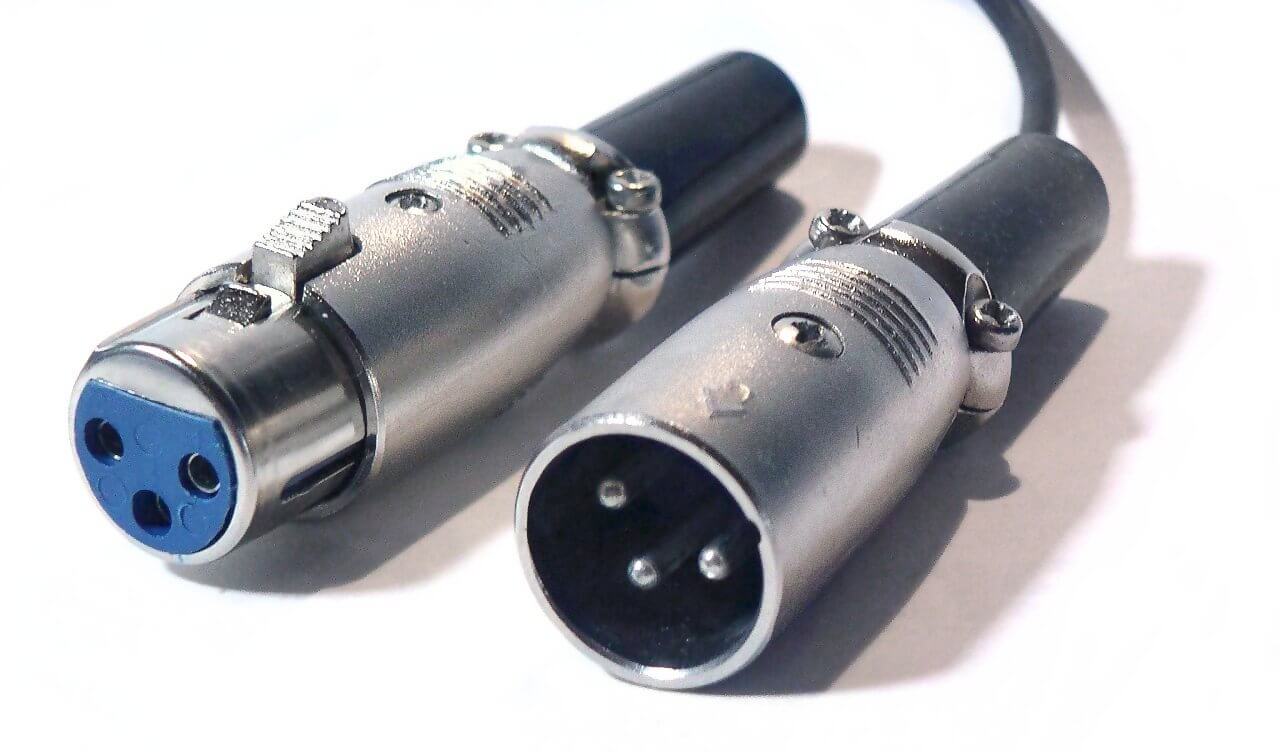
We most commonly use XLR cables for both live speakers and studio monitors, as well as microphone connections. The rotation can vary, but gear inputs usually have a female head and the cables have a male head.
XLR cables can feature 3, 4, 5, 6, or 7 pins and corresponding wires. However, traditional (and the most common) XLR cables feature 3 pins. Two pins are conductors (one negative and one positive) in addition to a ground pin.
What are TRS cables?
Another example of balanced cables is TRS (Tip Ring Sleeve) cables. TRS cables have three wires inside them, and the two signal conductors cancel out the noise. The tip & ring components are the two signal conductors, while the sleeve is the ground.
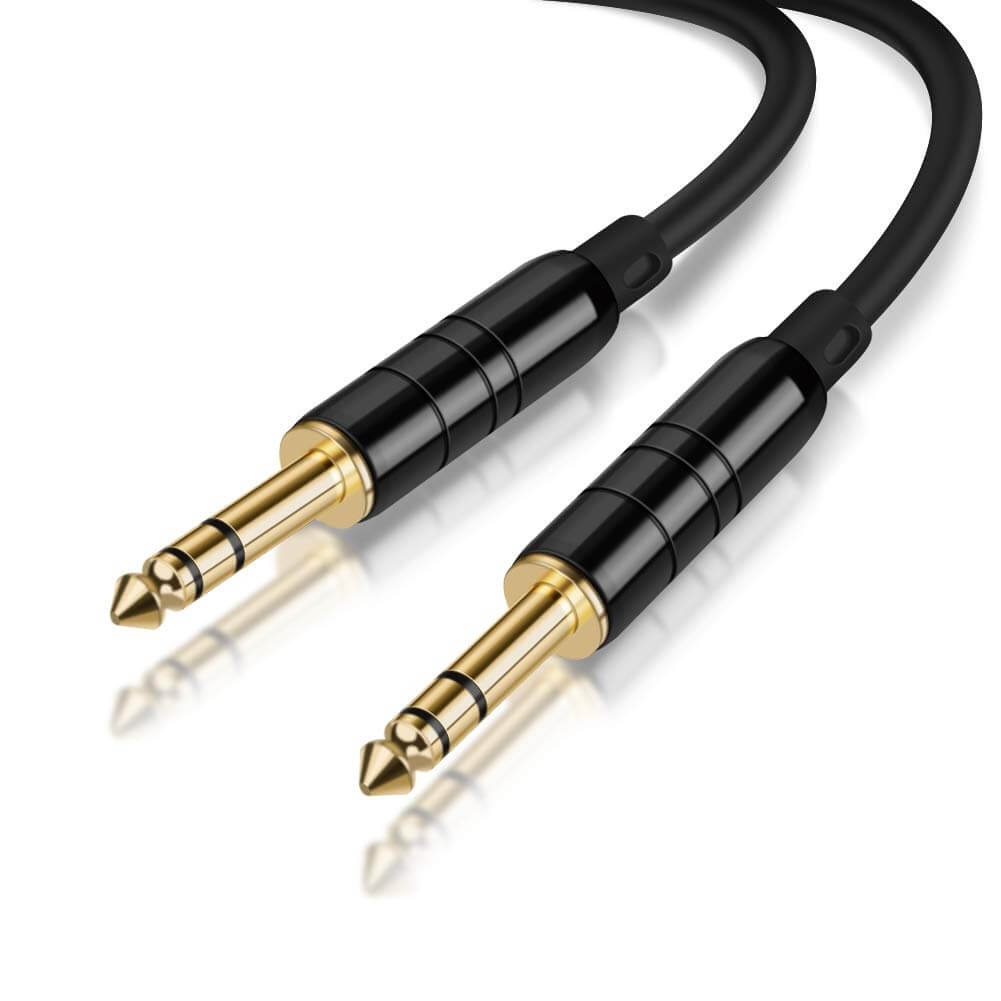
We use TRS cables for studio monitor inputs, and line inputs such as outboard preamps to audio interfaces too. The difference between TS and TRS cables is that TRS cables have two stripes on them, while TS cables only have one.
What are TS cables?
TS (Tip Sleeve) cables are unbalanced connections. We use them mostly for instrument connections like guitars, bass, and even synthesizers.
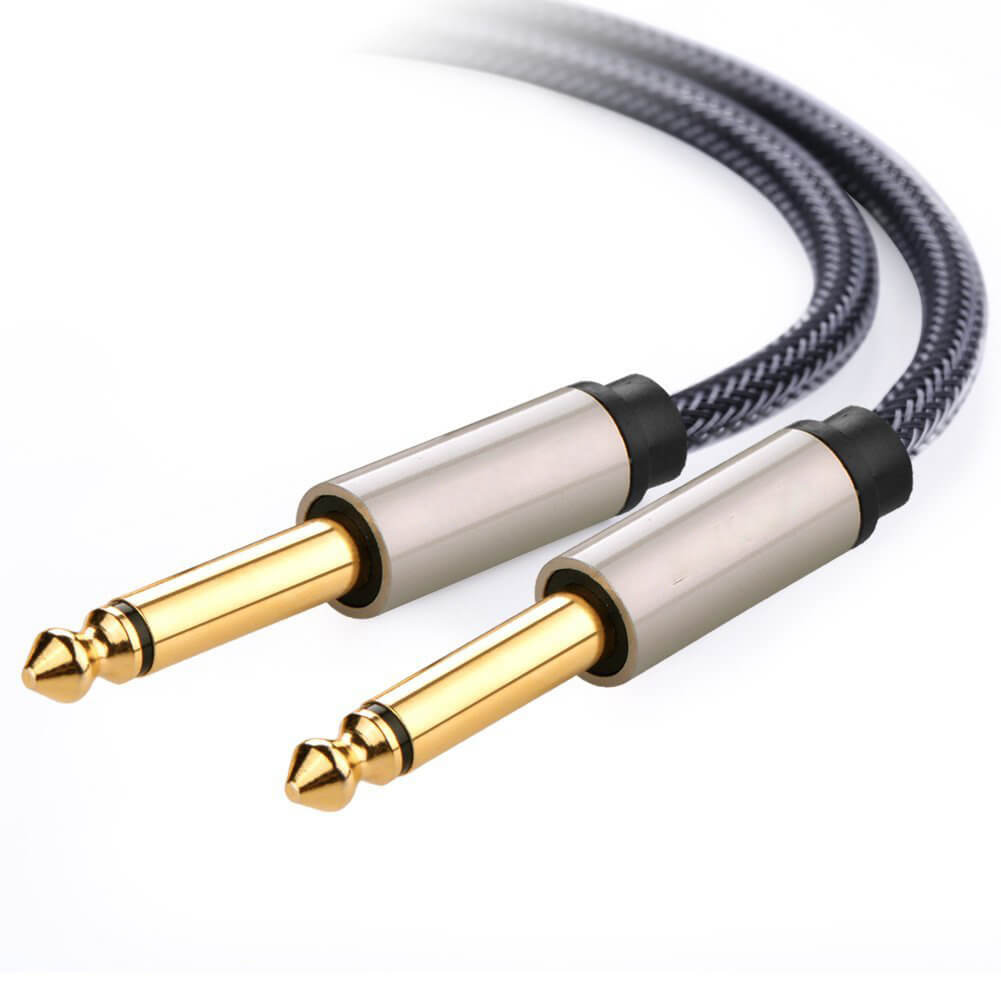
What are RCA cables?
Unbalanced RCA cables have one cable per channel (one left and one right). Moreover, you’ll find more RCA connections on consumer products rather than professional studio equipment. However, that doesn’t mean you’ll never use them.
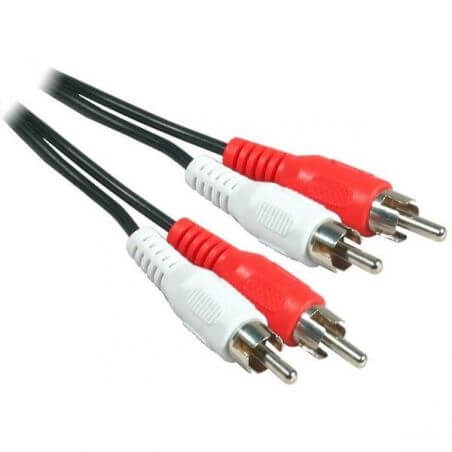
If you’re a DJ, chances are you’ve had to work with these. DJs commonly use them to connect turntables to live rigs!
Different types of digital audio cables
In addition to audio cables, you’ll also find digital cables in a professional studio setup.
What are MIDI cables?
Musical Instrument Digital Interface (MIDI) cables transfer digital information rather than sound. We call these digital bits of information event messages. Information we send through MIDI cables represents commands we make on our hardware. For example, you can play a note with a particular velocity and speed and your MIDI cable will transmit all of that data. MIDI cables also transmit information like panning, MIDI Aftertouch, tempo, and other event messages too.
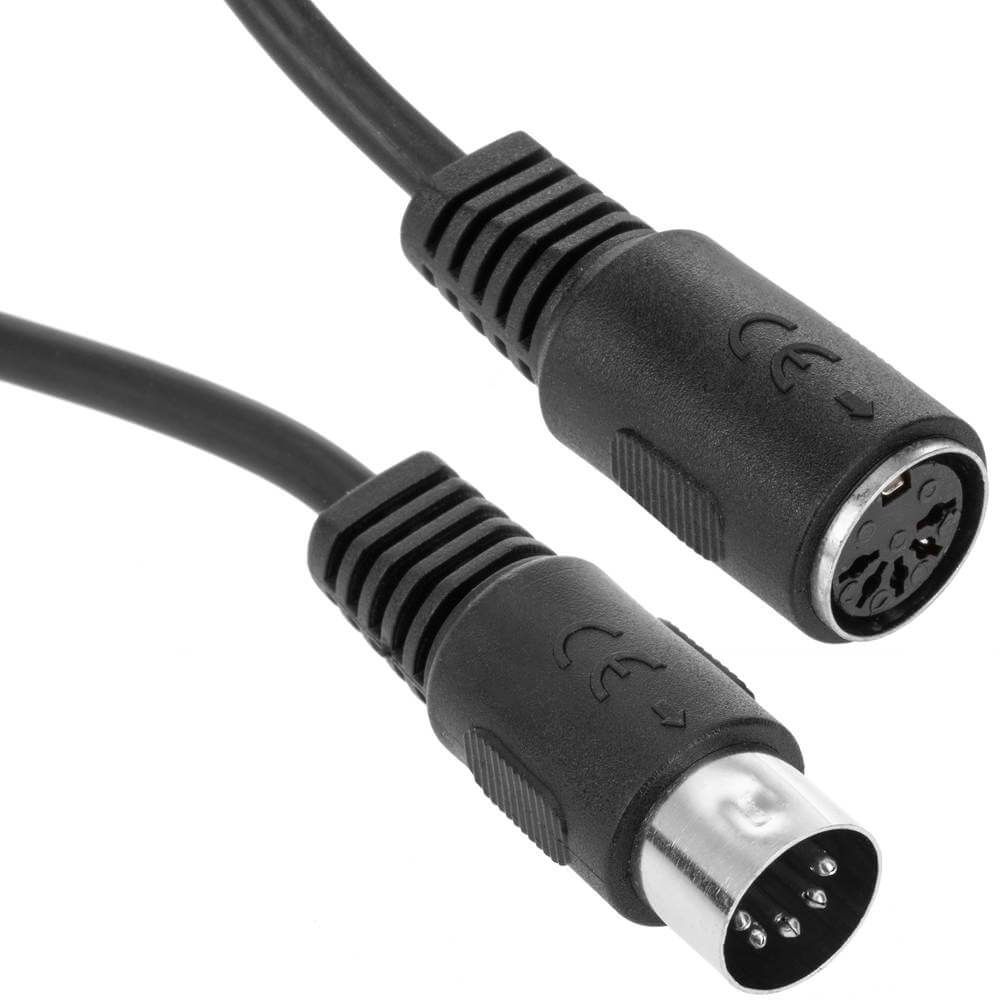
We can use them to connect synths, keyboards, sequencers, drum machines, audio interfaces and other electronic music devices to each other. As a result, MIDI cables allow computers and electronic instruments to communicate with each other.
MIDI to USB cables
If you’re looking into getting a MIDI controller, you’ll get a USB cable rather than a MIDI cable. Like MIDI cables, USB cables don’t transmit any sound – only digital information.
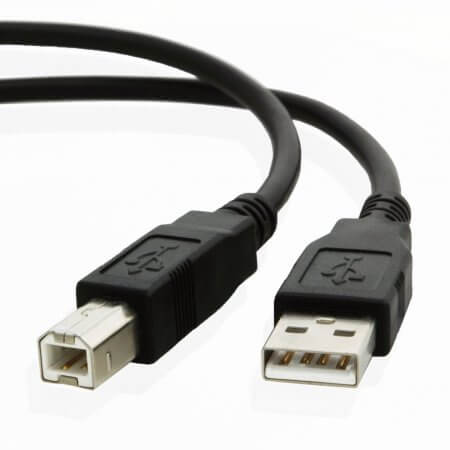
Because so many people use USB inputs, they’re cheaper and more accessible. As a result, you can seamlessly connect your MIDI controller to your computer setup in no time. In fact, you’ll find USB cables on modern drum machines and audio interfaces, in addition to MIDI controllers.
Which are better – balanced or unbalanced cables?
The answer to this question is entirely subjective. You may have a balanced cable, but that does not mean the connection between your hardware is a balanced one.
Both your input and output devices must also be balanced for the connection to be balanced. Even one unbalanced point in the connection will create an unbalanced signal flow.
How do I know if my equipment is balanced?
It’s often noted on some mixers, synths, microphones and other hardware units whether the outputs and inputs are balanced. However, if your input and output are XLR connections then the connection is balanced.
A quick way to spot unbalanced gear:
If it has an RCA output/input then it’s an unbalanced connection.
Guitars and bass connections always have unbalanced connections.
Whether mono or stereo, a 1/4 inch input/output is usually an unbalanced connection. However, this isn’t always the case. Google the equipment or read the manual if you’re not sure!
